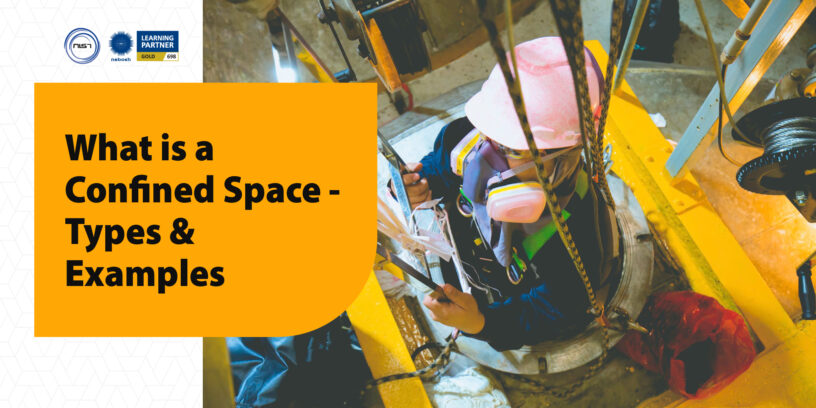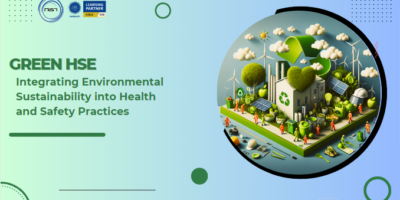Working in a confined space can be dangerous and difficult, but it is required in many industries, including construction and manufacturing. A confined space is an enclosed or partially enclosed facility with limited space and access that can offer serious risks to workers. Toxic gases, combustible chemicals, or low oxygen levels may be present in these areas.
As a result, understanding the definition of a confined space, as well as the various types and examples of confined spaces, is critical for mitigating risks and ensuring worker safety.
In this blog, we will look at the concept of a confined space as well as the several sorts of confined spaces, such as non-permit-required confined spaces, permit-required confined spaces, limited spaces, elevated confined spaces, and mechanical spaces.
What is A Confined Space?
A confined space is said to be an enclosed area with limited space that makes it difficult for people to move freely. These areas often have few entry points and may represent a risk to anybody entering or operating in them.
Characteristics of a Confined Space
- Limited entry / exit points: Because confined rooms often have just one or a few access points, it is difficult to enter or escape rapidly in an emergency.
- Limited ventilation: Because confined places may have limited ventilation, harmful gases or vapours might accumulate.
- Limited space: Confined spaces are typically small, making it difficult for someone to move about or escape in an emergency.
- Hazards: Confined spaces may contain Hazards such as toxic gases, combustible substances, or insufficient oxygen levels, which can endanger workers entering the space.
Examples of Confined Spaces:
The following are some examples of limited spaces:
- Tanks and vessels are big containers that are used to store liquids or gases. Workers may be required to enter these areas for maintenance or cleaning purposes.
- Silos are large structures used to store bulk materials like grain or cement. Workers may be required to enter these areas to remove or add items, as well as to perform maintenance or repairs.
- Pipelines are long, narrow tubes that carry fluids or gases over vast distances. Workers may be required to enter these areas for maintenance or repairs, as well as to construct new pipelines.
- Tunnels are underground corridors that are utilised for transportation or utility purposes. Workers may be required to enter these areas in order to perform maintenance or repairs or to install new services.
- Storage bins are containers used to store bulk goods like grains, chemicals, or coal. Workers may be required to enter these areas to remove or add items, as well as to perform maintenance or repairs.
- Boilers are machines that generate steam or hot water for use in heating or power generation. Maintenance or repair workers may be required to enter these areas.
- Sewers are subterranean conduits that transport wastewater or stormwater to treatment plants or locations of release. Maintenance or repair workers may be required to enter these areas.
- Underground vaults are underground chambers used to store electrical distribution system equipment such as transformers or switches. Maintenance or repair workers may be required to enter these areas.
- Flues are pathways that transport gases from a furnace or other combustion unit to the outdoors. Maintenance or repair workers may be required to enter these areas.
Types Of Confined Spaces
There are various forms of confined spaces, each with its own set of hazards and risks. Here are some examples of common tight spaces:
1. Confined Spaces that Do Not Require a Permit
These areas meet the concept of a confined space but do not present any known major hazards. Small storage compartments, attics, and crawl spaces are examples of non-permit-required restricted places. Workers visiting these places must nonetheless follow specific safety standards, such as wearing personal protection equipment (PPE) and communicating with a designated attendant, even though these spaces may not pose substantial dangers.
2. Confined Spaces That Require a Permit
These areas have one or more recognised major dangers, such as the possibility of hazardous atmospheres, engulfment, or entrapment. Tanks, silos, and sewers are examples of permit-required confined areas. Before workers can enter a permit-required restricted area, the employer must establish and implement a documented permit programme that explains the procedures for safe entrance and exit, identifies potential risks, and specifies the control measures that must be utilised to ensure worker safety.
3. Restricted Locations
These areas are intended for restricted human entrance and have unique access criteria. Elevator shafts, chimneys & small crawl spaces are examples of limited places. Restricted locations can be either non-permit or permit-required, depending on their risk level.
4. Confined Elevated Spaces
These areas are placed above ground level and can only be reached via ladders, stairwells or lifts. Roofs, towers, and raised platforms are examples of elevated restricted spaces. Workers who access elevated confined spaces must adhere to certain safety protocols, like using fall protection equipment and being mindful of the possibility of slips, trips, and falls.
5. Mechanical Spaces
HVAC systems, boilers, and turbines are examples of mechanical equipment that may require maintenance or repair in these areas. Mechanical spaces can be either non-permit or permit-required confined spaces, depending on their risk level. Workers accessing mechanical spaces must adhere to strict safety protocols like locking out and marking out equipment and adhering to precise procedures for properly entering and exiting the space.
Conclusion
Employers are in charge of identifying and evaluating confined work locations and putting in place the necessary safety precautions to protect employees. In order to work in restricted areas securely, workers must get the necessary training and tools. Employers may make sure that their employees are safe and healthy while working by being aware of the risks posed by tight spaces and implementing the necessary safety measures.
At NIST Global, we offer customized Confined Space training matching your industrial needs. Some are listed below:
To train your employees on Confined Space, call +91 8754465588 or email info@nistglobal.com.














Leave a Reply